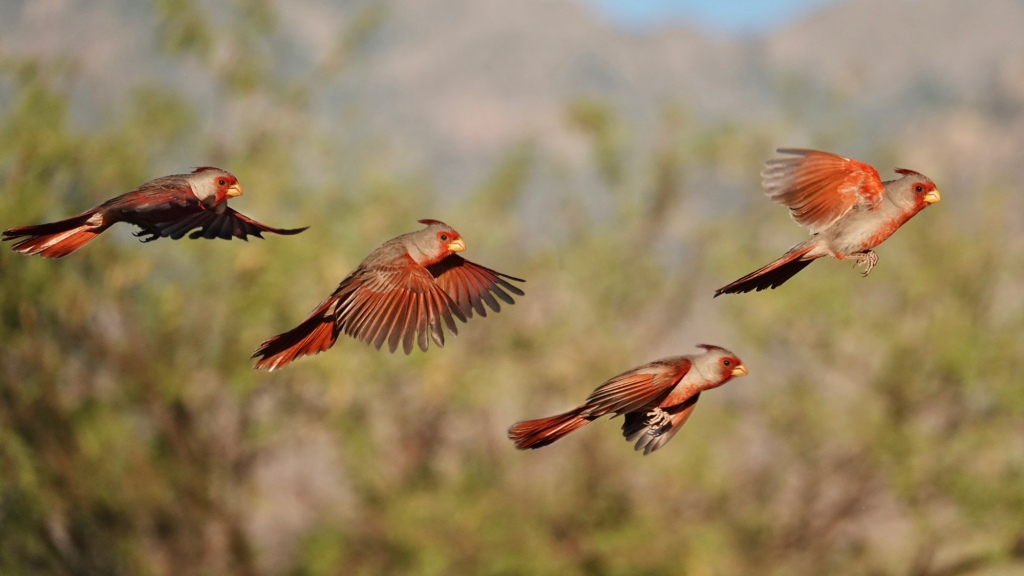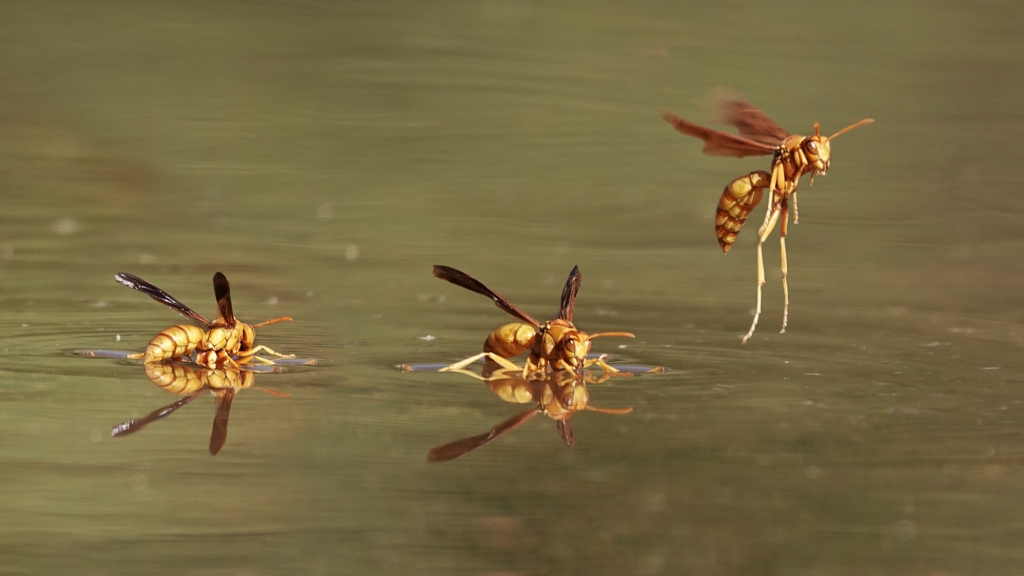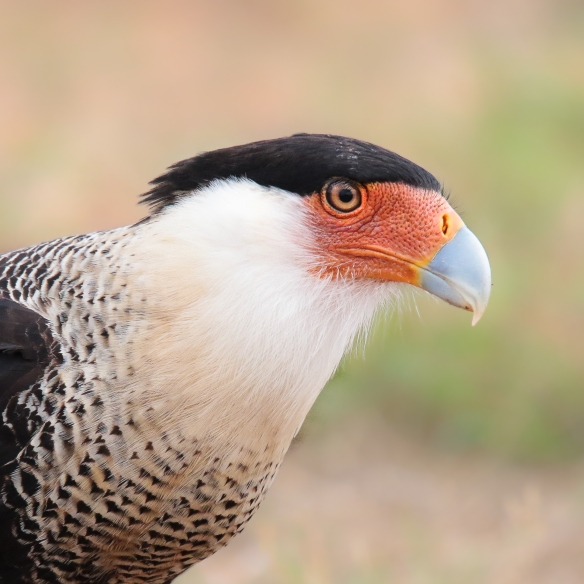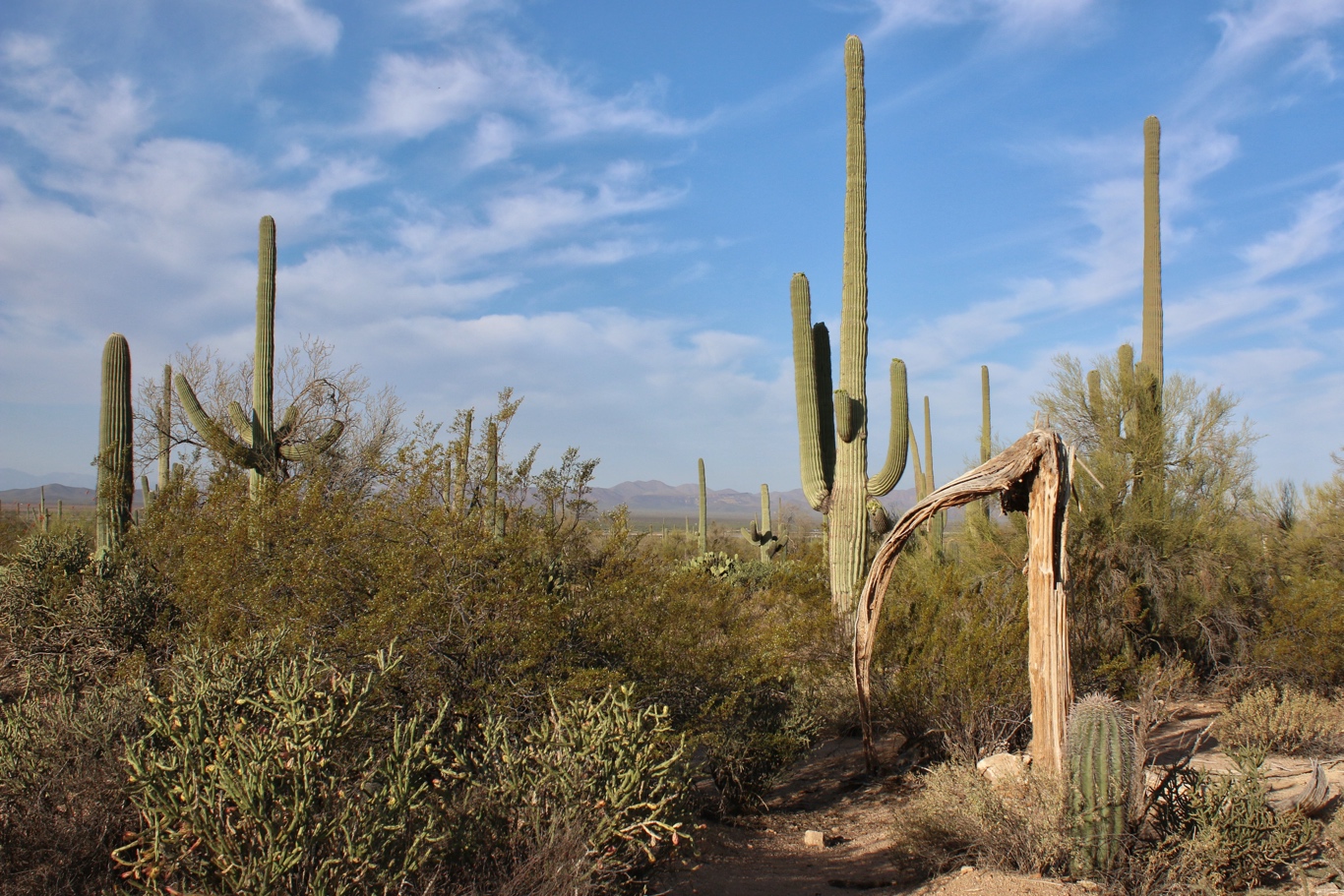We had numerous opportunities to photograph birds in flight at Alan Murphy’s Bird photography workshop outside of Green Valley, Arizona this past week. There were so many good opportunities that I wanted to capture their flight in just one composited image. In case you’re not familiar with this technique, I overlaid successive images taken of their flight onto the image of the right-most bird in the photo — in this case using the double exposure tool in SnapSeed.

Alan has perfected the set-up for capturing birds in flight by placing entry points to feeding sites, so that birds fly directly across in front of us from one perch to another on the same focal plane. With cameras set at 1/1000-1/2000 second with a capture rate of 20-24 frames per second, we can capture 6-10 decent images of flight.

And just for fun, I tried my luck capturing the take-off of the golden paper wasp from the small pond in front of our blind…and luck it really was because I only managed to do it once.





















